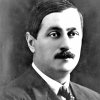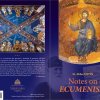After graduating from the University of Belgrade with a PhD in Nuclear Physics, he taught at the University of Belgrade and worked at the Vinca Nuclear Institute. Novakov immigrated to the United States in 1963 and began working as a research scientist at the Lawrence Berkeley National Laboratory. He later founded an Aerosol Research Group, which traveled the world conducting ground breaking research on climate change. Dr. Novakov is a distinguished member of the Serbian Academy of Sciences and Arts.
.Novakov has had his work published hundreds of times in peer-reviewed journals. In October, 1974 Science Magazine published "Sulfates as Pollution Particulates: Catalytic Formation on Carbon (Soot) Particles", which Novakov co-wrote with S. G. Chang and A. B. Harker. In 1982, "Real-time measurement of the absorption coefficient of aerosol particles" was published by Applied Optics, which he co-wrote with A.D.A. Hansen and H. Rosen. In 2008 he published a paper for LBNL (Lawrence Berkeley National Laboratory) entitled "Response of California temperature to regional anthropogenic aerosol changes".
Novakov was born in Sombor, Serbia in 1929. His father was a veterinarian and his mother was a homemaker. While in high school, Novakov began to build x-ray tubes and radios, furthering his scientific knowledge on his own. Novakov has been married to Marica Cvetković for over 50 years. The couple have a daughter, Anna Novakov, now an Art History professor at Saint Mary's College of California.
References:
- http://www.sciencemag.org/cgi/content/abstract/186/4160/259
- http://www.opticsinfobase.org/abstract.cfm?URI=ao-21-17-3060
- http://repositories.cdlib.org/lbnl/LBNL-451E/
From Wikipedia





